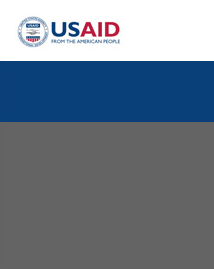Executive Summary
As the largest economy on the African continent, a model for peaceful post-conflict transition, a stable democracy, and as the vanguard in addressing HIV and AIDS, South Africa serves as an example for many African countries. However, to ensure its continued success, the Government of South Africa (GoSA) recognizes that it must address its internal challenges. The nation seeks to solve the most persistent of development challenges such as income inequality, delivery systems struggling to cope with an increasing number of needs, and growing vulnerable populations. Furthermore, South Africa must do this while reconciling and reforming post-Apartheid government systems to make them more accountable and effective. The rest of the African continent bears witness to South Africa’s transformation and can learn from its proven successful practices.
Accordingly, South Africa’s partnership with the United States is central to U.S. efforts in Africa. The “U.S. Strategy Toward Sub-Saharan Africa” released in June 2012 articulated the focus of United States Government (USG) efforts in Sub-Saharan Africa, stating:
Given the growing strategic importance of sub-Saharan Africa to the United States, over the next 5 years we will elevate our focus on and dedicate greater effort to strengthening democratic institutions and spurring economic growth, trade, and investment, while continuing to pursue other objectives on the continent.
These areas of focus complement South Africa’s National Development Plan (NDP) – Vision 2030. The NDP summarizes South Africa’s challenges and opportunities, and provides a vision for the future. As it articulates:
South Africa has the potential and capacity to eliminate poverty and reduce inequality over the next two decades. This requires a new approach – one that moves from a passive citizenry receiving services from the state to one that systematically includes the socially and economically excluded, where people are active champions of their own development, and where government works effectively to develop people’s capabilities to lead the lives they desire.
USG development efforts must occur in partnership with the GoSA, and as such, USG assistance strives to further South Africa’s development goals and, to the fullest extent possible, support South Africa’s core development priorities and chosen development path. Furthermore, USG assistance efforts support the GoSA’s Presidential Outcomes, which are “… designed to ensure that government is focused on achieving the expected real improvements in the life of all South Africans.”
USG assistance must consider the role that Official Development Assistance (ODA) plays in South Africa. In comparison to the size of the South African economy, ODA is a very limited resource, amounting to less than 1 percent of the national budget. The GoSA’s ODA principles state that the true value of ODA in South Africa is realized when it is able to provide solutions and tools that enable the country to use its own resources more effectively. ODA is used to support new and more effective ways of implementing government policies and priorities for poverty reduction. Hence, USAID/South Africa’s (USAID/SA) strategy focuses ODA to assist in developing South African capacity to address its critical needs, and its capability to spearhead new and more effective approaches for enhancing service delivery. Emphasis is placed on the quality of ODA rather than the mere quantity of ODA.
USAID’s development priorities are best served by assisting the country to address its internal challenges and thereby reinforcing South Africa’s leadership role. USAID’s primary development goal of the Country Development Cooperation Strategy (CDCS) in South Africa over the next five years is South Africa’s continued transformation into an equitable, effective, and exemplary nation. This can be achieved through the concentration of resources on the attainment of the following three development objectives:
- Health outcomes for South Africans improved;
- South African resource effectiveness advanced in targeted sectors; and
- South African impact on African development enhanced.
Furthermore, given the importance of South Africa as the paramount driver of growth in the region, the bilateral CDCS reinforces the goal of the USAID/Southern Africa Regional Development Cooperation Strategy.








Comment
Make a general inquiry or suggest an improvement.